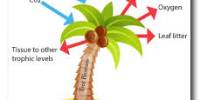Having a house near a bustling airport has many advantages. It’s convenient to a lot of places and eliminates the hassle of trying to catch a flight while stuck in traffic. However, enduring the startling noises of commercial jets during landing and takeoff comes at a cost.
Computer research done by Texas A&M University justifies the use of a shape-memory alloy to minimize the unpleasant aircraft noise produced during landing. These materials might be used as passive, seamless fillers within airplane wings that autonomously release themselves into the ideal position during descent, according to the researchers.
“When landing, aircraft engines are throttled way back, and so they are very quiet. Any other source of noise, like that from the wings, becomes quite noticeable to the people on the ground,” said Dr. Darren Hartl, assistant professor in the Department of Aerospace Engineering. “We want to create structures that will not change anything about the flight characteristics of the plane and yet dramatically reduce the noise problem.”
The researchers have described their findings in the Journal of Aircraft.
Aircraft noise has long been a public health concern. During landing, planes may emit up to 75-80 dB, which can be detrimental to one’s hearing over time. People who live near airports, for example, have been proven to have disrupted sleep and a higher risk of stroke and heart disease than those who do not live near airports, according to research.
During ascent and descent, the source of aircraft noise is different. The engines are the main source of noise during takeoff. When planes slow down to land, on the other hand, the engines do not need to create power and are mainly idle.
The wings begin to reorganize themselves at this point in order to slow the plane down and prepare for landing. The front edge of the wing separates from the main body, much like Venetian blinds do when they open. This alteration causes air to rush into the newly created area, circling furiously and causing the noise.
When a flute is played, air blown over a hole begins to swirl around the hole, and the size, the length, and how I cover the holes, produces a resonant sound of a certain frequency. Similarly, the circulating air in the cove created between the front edge of the wing and the main wing resonates and creates a sharp, unpleasant noise.
Dr. Darren Hartl
“The idea is similar to how a sound is generated in a flute,” said Hartl. “When a flute is played, air blown over a hole begins to swirl around the hole, and the size, the length, and how I cover the holes, produces a resonant sound of a certain frequency. Similarly, the circulating air in the cove created between the front edge of the wing and the main wing resonates and creates a sharp, unpleasant noise.”
Fillers deployed as a membrane in the shape of an extended “S” within this cove might avoid noise-causing air circulation and so reduce the jarring sound, according to previous work by Hartl’s NASA coworkers.
However, there was no systematic review of possible materials that might adopt the appropriate S-shaped geometry during descent and then retract back into the wing’s front edge after landing.
To close this gap, the researchers did extensive simulations to see if a shape-memory alloy membrane could go back and forth, altering shape at each landing. The geometry, elastic characteristics of the shape-memory alloy and the aerodynamic flow of air surrounding the material during descent were all included in their analysis.
The researchers also modeled the motion of a carbon-fiber-reinforced polymer composite membrane under the same airflow circumstances as a comparison.
According to Hartl, these simulations are computationally demanding since the flow of air surrounding the conformal material must be represented while assessing the material’s air-induced motion.
“Every time the air applies some pressure to the material, the material moves. And every time the material moves, the air moves differently around it,” he said. “So, the behavior of the airflow changes the structure and the motion of the structural changes the airflow.”
As a result, the researchers had to run computations hundreds to thousands of times before the materials’ motion could be accurately replicated. They discovered that both the shape memory alloy and the composite could change their form to limit air circulation and hence reduce noise when they assessed the results of their simulations.
However, the researchers discovered that the composite only had a few number of patterns that could be used to eliminate noise. Hartl and his colleagues want to test the results of their models with experiments as the following step.
The researchers will use scaled-down versions of aircraft wings with shape-memory alloy fillers in wind tunnels for these studies. The objective is to see if the fillers can form the desired shape and decrease noise in scenarios that are as close to real world as possible.
“We would also like to do better,” said Hartl. “We might be able to create smaller structures that can reduce noise and do not require the S-shape, which are actually quite large and potentially heavy.”
















